We have bad and good news for loan lenders.
The bad news is old ways of doing loan lending business no longer align with the expectations of today’s borrowers. A labyrinth of forms, credit checks, and all the paperwork to the extended loan approval processes leads to inefficiencies, impacting both the bottom line and customer experience of the finance company.
Traditional loan lending is losing favor among small businesses with loan applications dropping from 43% in 2019 to 34% in 2012. Because of a more challenging approval process and a decreasing approval rate from 51% to 31% during the same period, customers are picking alternative options, including crowdfunding, Peer-to-peer lending, and Fintech platforms. Forbes.
The situation has made every finance professional question: How do you adapt and thrive in an industry that’s changing by the minute?
So, here’s the good news and the solution: Loan lending app development.
With a well-designed loan lending app, you can offer borrowers a seamless and convenient experience. Customers can apply for loans, submit documents, and receive approvals from the comfort of their smartphones, all within a few clicks. On the contrary, a loan lending app can replace paperwork with a smart solution, storing and processing customer data digitally.
But that’s just a glimpse. Loan lending app development is more than just about simplifying processes. It’s a threshold for leveraging data analytics, AI, and automation to make informed decisions. Thereby reducing risks, enhancing customer relationships, and providing a competitive edge in the finance industry.
In this guide, we are exploring everything about Loan lending app development. So that you can digitize your loan lending services with the right solution.
What is a Loan lending app? And if there’s demand for loan lending apps in the market?
Loan lending apps are a connector between loan lenders and borrowers. Built on top of mobile technologies, loan lending apps accelerate the process, improving the customer experience. Loan lending apps differ depending on the type of loan, such as business, personal, car loans, and mortgages. Furthermore, based on who lends the loans play a significant role in categorizing loan lending apps. For example,
- Banks: Banks are traditional providers of financial products, and developing loan lending apps allows them to automate processes, enhance services, and reach a wider audience.
- Credit unions: Credit unions build loan lending apps to offer a convenient option to avail the loans and other digital financial services for their members.
- Peer-to-peer: Customer interest in alternative platforms like peer lending apps is increasing. Hence, by creating P2P loan lending apps, fintech companies allow individuals to be lenders and invest in innovative ideas. While borrowers can find more profitable loans than they would get from banks.
But does the loan lending market need another loan lending mobile app?
In 2022, the global digital lending market size was valued at US$7 billion and is projected to grow at 26.5% from 2023 to 2030. Source.
If we talk about the market leader, North America led the segment with 33% of the global revenue share.
Given the rising number of mobile device users, it won’t be wrong to say that every loan provider should opt for loan/money lending app development. According to a CNBC report, 54% of consumers agreed they use digital banking tools more often now.
A study found that 99% of Gen Z and 98% of millennials use a mobile banking app for a wide range of tasks.
The numbers confirm that to be successful in the lending market, a digital presence is more important than a physical one.
For example, an online lending platform, Avant provides personal loans for $2k to $35k. Customers can pre-qualify with a soft credit check and get the fund mostly the very next business day after the approval. Avant was founded in 2012 and has raised $2.23B in total funding. Moreover, the company has over 1 million customers who have borrowed over $7.5 billion in loans and credit cards.
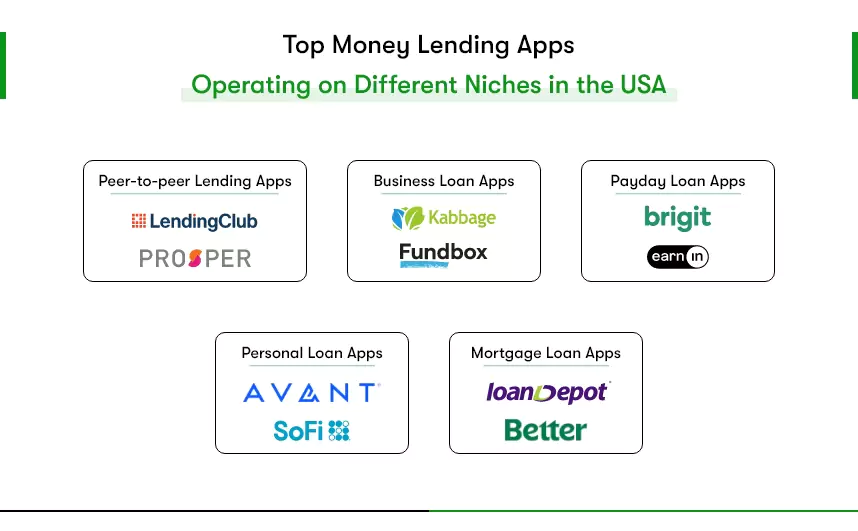
How do loan lending apps work?
Everything happens digitally on loan lending apps, from loan applications and document submission to credit checks and receiving funds into the bank account. Let’s see how the loan lending mobile app processes the loan compared to traditional loan providers.
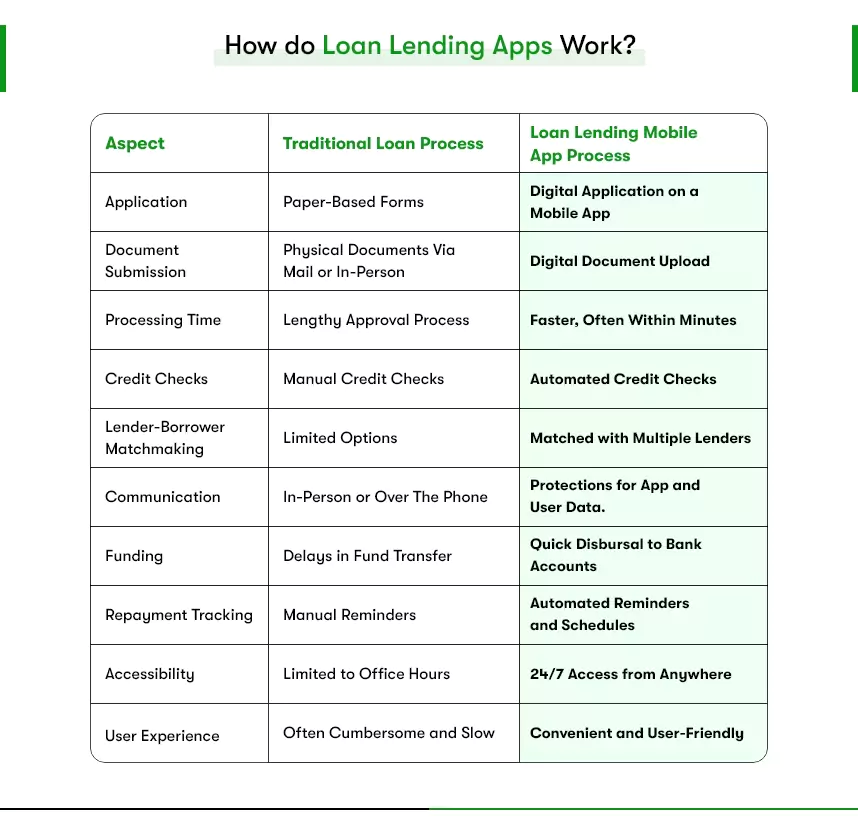
Things to sort out before you start your loan lending app development
Before diving into loan lending app development, there are three crucial things to get in order. Let’s break them down in simple terms with a professional tone, just like the content you provided:
Regulations you need to comply with
Before you start building your loan lending app, it’s vital to understand and follow the rules and laws that apply. These regulations are like the guidelines that ensure your app operates legally and ethically.
In the United States, lending businesses are subject to a complex web of federal and state regulations. The primary federal law governing lending practices is the Truth in Lending Act (TILA), which requires lenders to provide clear and accurate information about loan terms to borrowers.
Furthermore, each state may have its own set of lending regulations. Hence, you might need experts, like lawyers, who specialize in these rules to ensure regulation compliance.
Technology stack to build the loan lending app
Before finalizing the technology stack, you want to decide what kind of app you want to develop. Given that technology to build apps differs based on the platforms and operating systems.
For example, JavaScript, CSS, and HTML are the standard web development technologies. Whereas Java, Swift, and Flutter can be used to develop a mobile app. Therefore, you must consider whether you want your app to work on different devices, like both iPhones and Android phones. Because that will impact the technology selection.
However, choosing Flutter for your Fintech app development is like multiple birds at one stone. Flutter is a cross-platform framework that allows you to build web, mobile, and even desktop apps using a single codebase.

Loan lending app development team
Your loan lending app development team structure should look like the below:
- App Developer: Hire Flutter developers with experience in building fintech apps.
- Designer: A creative designer who can simplify the complex loan lending process through intuitive UI/UX design.
- Legal Consultant: They ensure your app complies with all the regulations.
- Business Analyst: The person who can help you define the app’s features and functionality,
- Project Manager: The person who oversees the entire project and ensures everyone works well together.
Hiring Fintech app developers with relevant experience is a struggle. It gets even more challenging when you’re looking for developers with honesty, particular technology expertise, and positive reviews. So, to find the right team, you can:
- Prefer a custom app development company and hire a team of dedicated developers.
- Look into their previous projects and experiences similar to what you want to achieve.
- Ask for recommendations and read reviews.
Steps to ensure the success of loan lending mobile app development
To build a frictionless loan lending app, you need a concrete roadmap. Because you don’t want your money-lending app to get surpassed by your competitors in the market. So, follow a systematic approach like the one below.
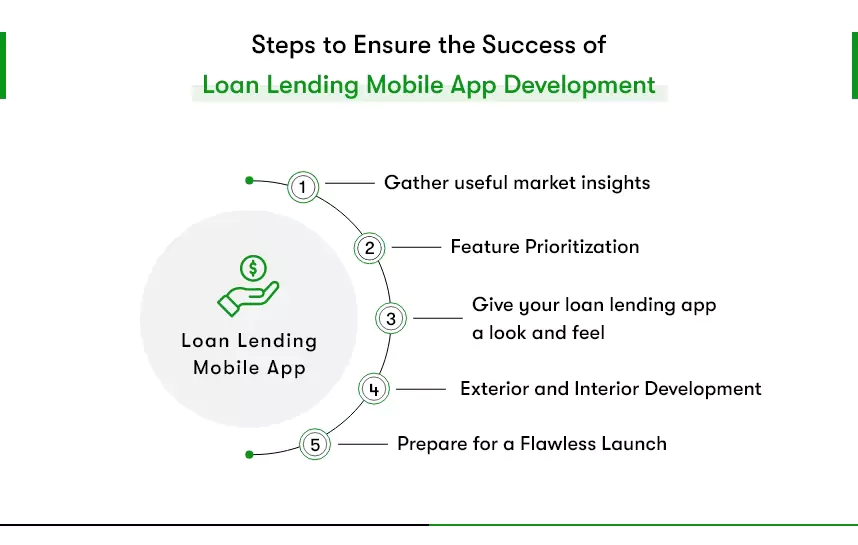
Step 1: Gather useful market insights
Start by studying the market. Look at what other similar loan lending apps are doing and what users like. You can also conduct a survey and talk to the people who might use your app. Ask them what they need and what they’d like to see in your loan app.
These practices will help you strategize to stand out from the crowd by creating just the loan lending app that the customers seek.
Step 2: Feature Prioritization
There can be hundreds of features to make your loan lending app functional and user-friendly. So, which ones to incorporate into your app requirements can be a challenging task.
However, MoSCoW is one of the best practices to help you prioritize your loan lending app features efficiently. It stands for Must-have, Should-have, Could-have, and Won’t-have. The O in the acronym is to make it pronounceable.
- M – Must-Have: These are essential features your app can’t do without.
- S – Should-Have: Important features that improve the user experience but aren’t critical.
- C – Could-Have: Features that would be nice to have but are not necessary.
- W – Won’t-Have: Features that won’t be included in the current version of your app
Let’s understand it with an example below.
| Category | Features |
| Must-Have (M) | User registration, loan application, and repayment schedules |
| Should-Have (S) | Account dashboard, secure document upload, and customer support chat |
| Could-Have (C) | Loan calculator, budgeting tools, and rewards program |
| Won’t-Have (W) | Advanced data analytics and integration with investment platforms |
Step 3: Give your loan lending app a look and feel
After prioritizing feature requirements, start giving them a shape. Create wireframes of screens, design feature layouts, and map the user journey. And while doing so, think about who will use your app and what they’ll want.
You want to make the app look nice and easy to use for your customers so they prefer your app over others. Hence, Design the app’s user interface and experience with your users in mind.
Step 4: Exterior and Interior Development
Now, it’s time to build the whole app, i.e., coding. There are two parts: one that people see (the user interface/frontend) and one that makes everything work (the backend). At this stage, you will need the help of experienced loan lending app developers who can write secure code.
About bugs, no matter how experienced app developers are, you will need to run various tests after the app development completion.
Step 5: Prepare for a Flawless Launch
Before you let people use your app, check it for problems. Test it to make sure it works well. Below is the range of testing to ensure a frictionless loan lending app.
- User testing,
- Performance testing,
- Payment testing,
- Usability testing,
- Manual and Automated testing.
Fix any issues you find so users have a good experience. Then, you can launch the app for everyone to use.
And that’s how you can streamline your loan lending app development.
Let’s talk about the Loan Lending App Development Cost
During our research, we found that, on average, it costs about $60000 to create a loan lending app. However, the cost of developing a loan lending app can differ based on several factors.
- The complexity of the app – depends on the platforms (Android/iOS), data storage and process, server and third-party API integrations, and more.
- The number of features – more features means more time to develop and complete the app, and so does the cost.
- The design of the app – custom animation, complex features, number of screens, and more design elements translates to high design costs.
- The geographical location of the development team – along with the currency discrepancies, the development rate also differs across countries, and it’s usually highest in the USA.
- The hourly rate of the development team – the hourly rate of developers varies based on their expertise, years of experience, and location as well.
Therefore, industry experts recommend hiring a development team from an outsourcing software company; if you.
- Need to develop a complex loan lending app with a number of features,
- Need to develop the app quickly,
- Don’t have the in-house expertise to develop the app,
- Want to save money on development costs.
Hire a team of Fintech app programmers from Kody Technolab
Developing a complex loan lending app quickly and cost-effectively is a tough task. If you lack in-house or local expertise, Kody Technolab as a Fintech App development company is your ideal partner.
Our dedicated team of developers specializes in complex app development, ensuring a speedy delivery of your custom solution. At the same time, our agility and modern approach help you save money on development costs.
Contact us today to bring your vision to life and make your loan lending app successful.

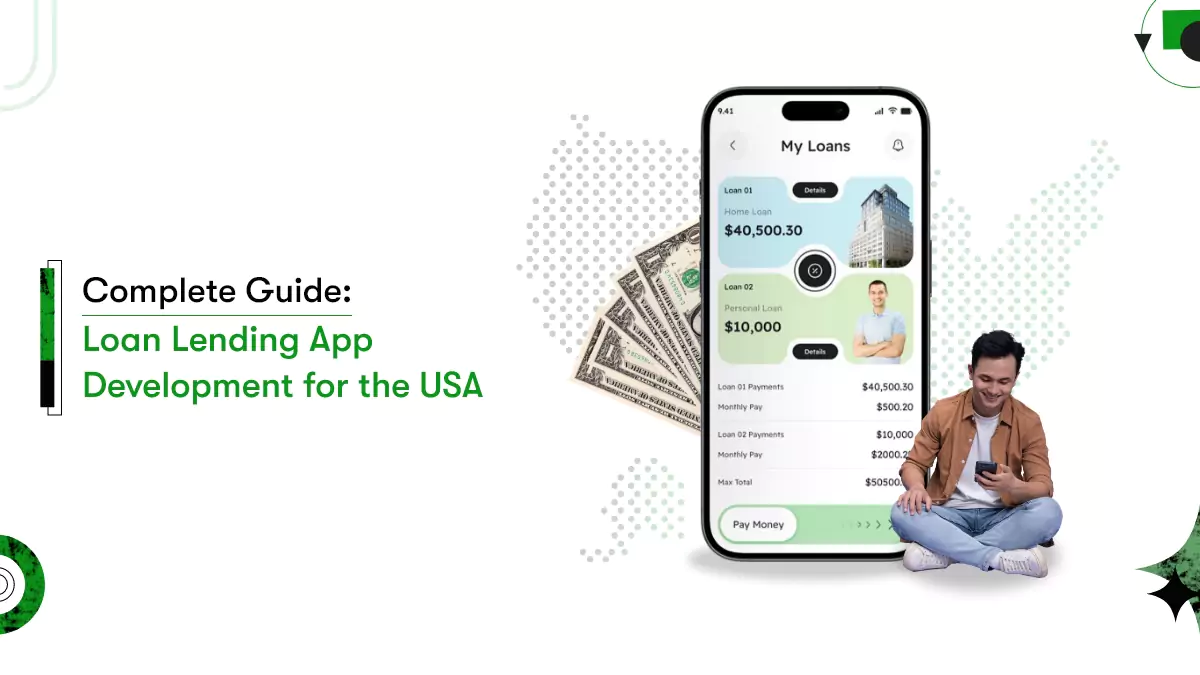
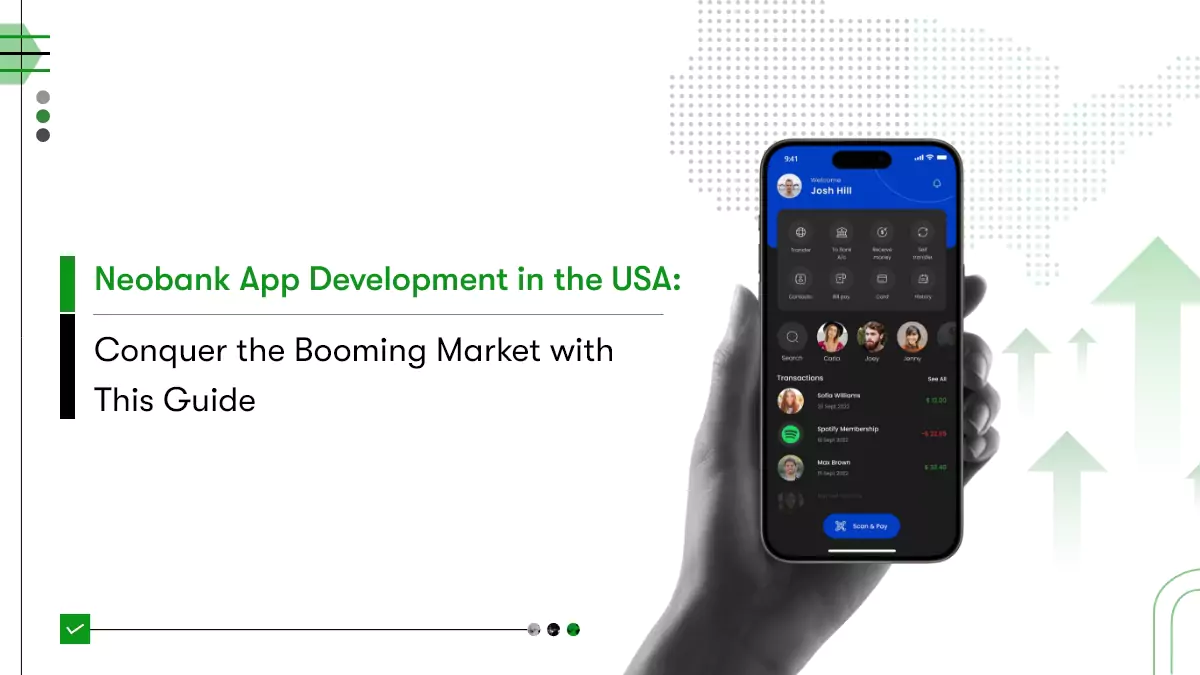
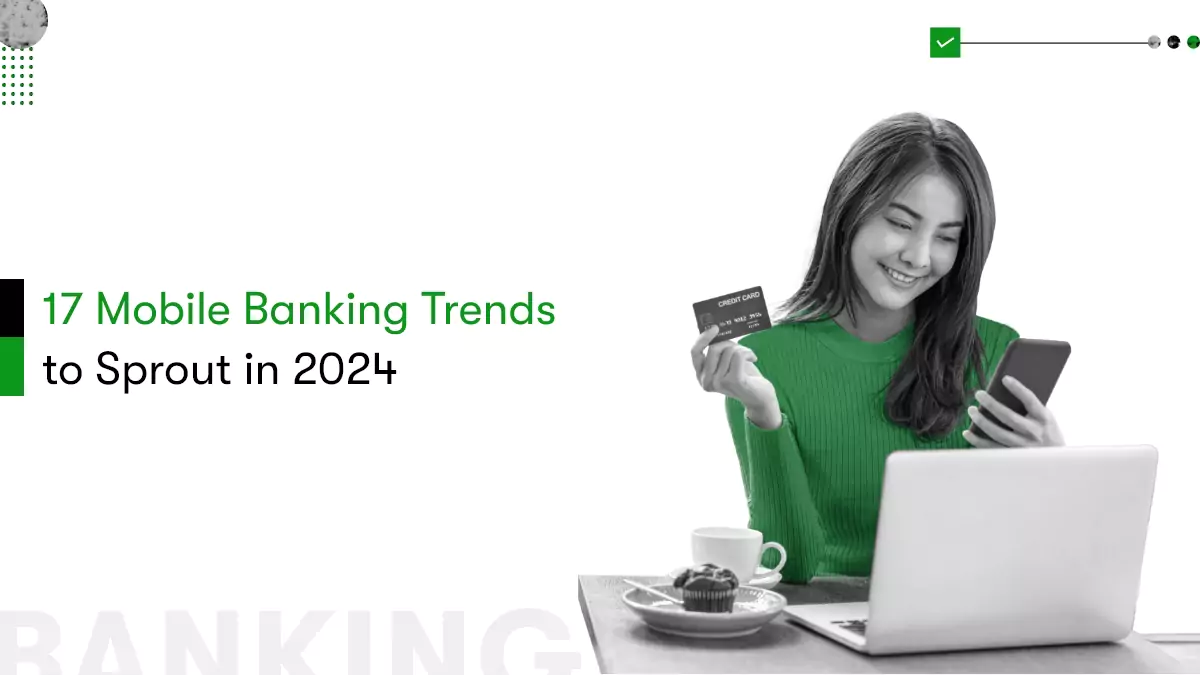

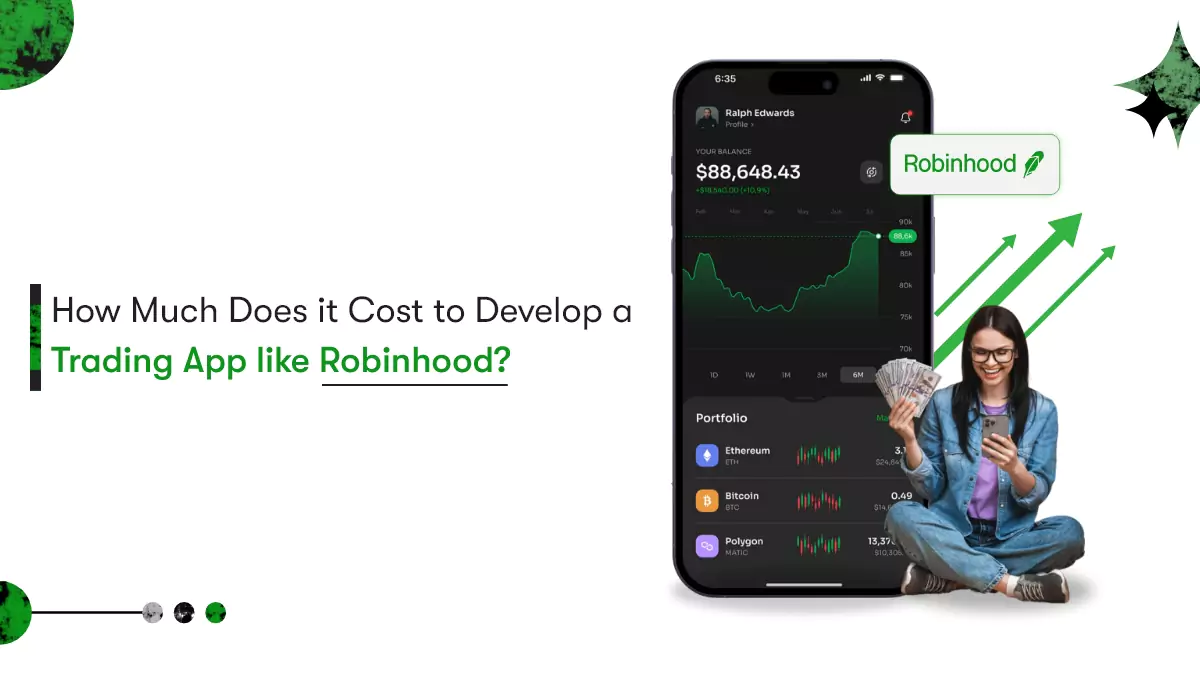






 Contact Information
Contact Information